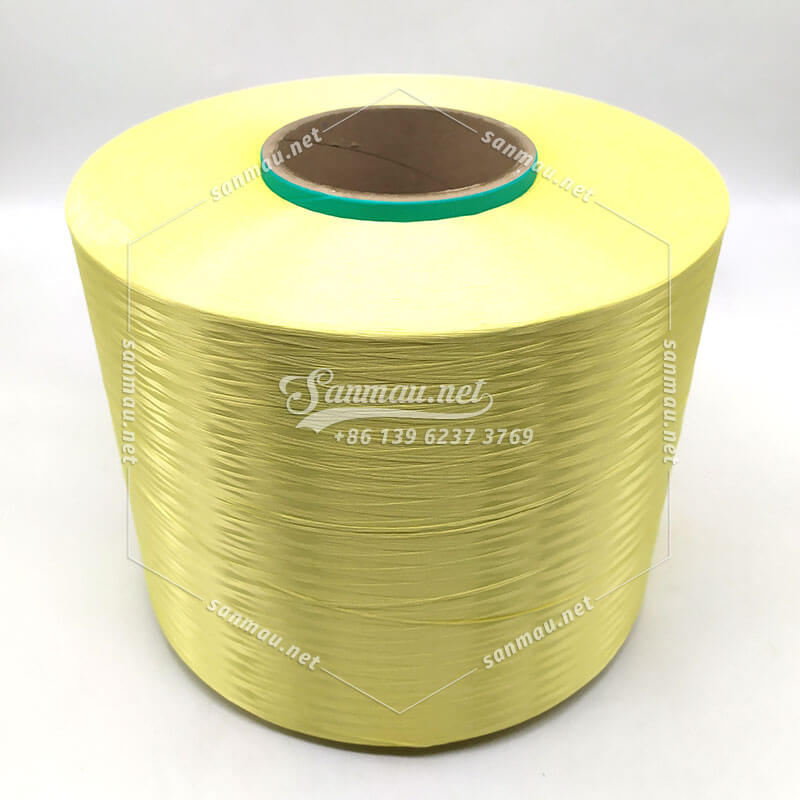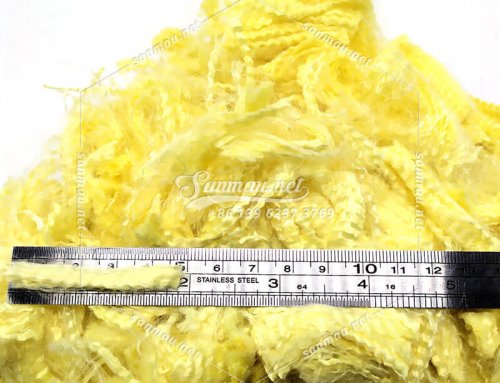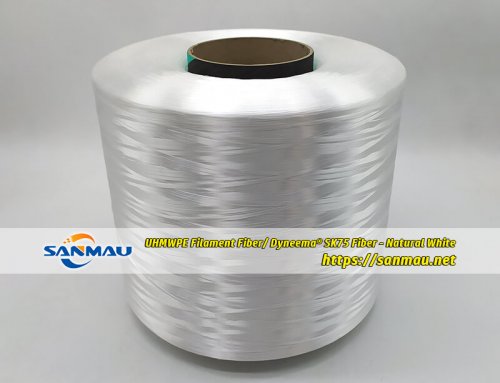Define: Kevlar® & Nomex® Fiber
These two brands are belong to DuPontTM. They are most used ARAMID material, which Kevlar® is para-aramid and always has a natural color of yellow, on the other hand, Nomex® is meta-aramid and has a natural color of white.
Kevlar® has successfully emerged out as one of the ultra high-performance fiber since it’s been first introduced by Stephanie Kwolek on 1971, and was registered by DuPont as a famous para-aramid material commercial brand. This magic fiber has various amazing features: long-term working in high-temperature environment, high tensile load, low elongation.
Advanced Properties of Kevlar® | Para-Aramid fiber
High strength to weight ratio
Low elongation to break
Low thermal shrinkage
Good heat & flame resistance
Self-extinguishing flame retardant properties
Good chemical resistance
Excellent bulletproof/ballistic properties
High cut resistance (not so easy to cut off than normal fibers)
UV resistance good (ONLY on black and other non-natural color fiber)
UV resistance poor (natural, and please notice this is the MAIN WEAKNESS of aramid fiber)
Common Types & Deniers
T-29: Standard Modulus
T-49: High Modulus
AP: 15% higher tenacity than T-29
KM2: Optimized ballistic resistance
Deniers: 200, 380, 400, 750, 800, 1000, 1420, 2160, 2250, 2840, 3000, 7100
Advanced Properties of Nomex® | Meta-Aramid fiber
Lower elongation to break
the 4th level of dye colorfastness, dyeable
Low thermal shrinkage
Excellent heat & flame resistance
Self-extinguishing flame retardant properties
Soft-hand yields good textile properties
High chemical resistance
Common Types & Deniers
T-430: Filament Yarn
Deniers: 200, 1200, 1600, 2400
The Most Used Aramid Fiber of Sanmau
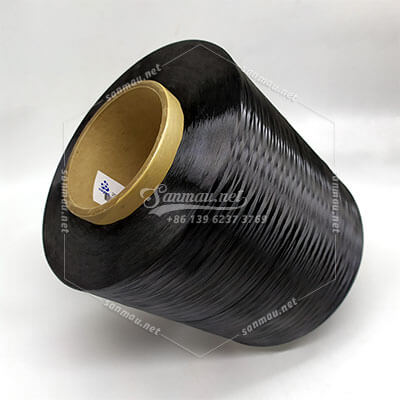
China-Made Black Para-aramid Fiber 1000D
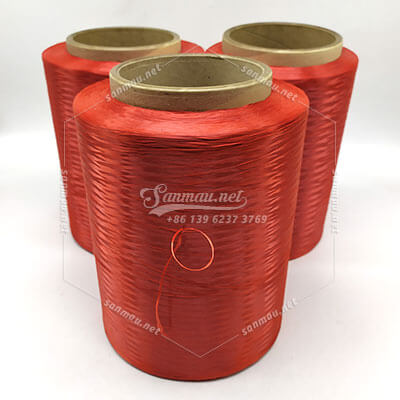
China-Made Red Para-aramid Fiber 1000D
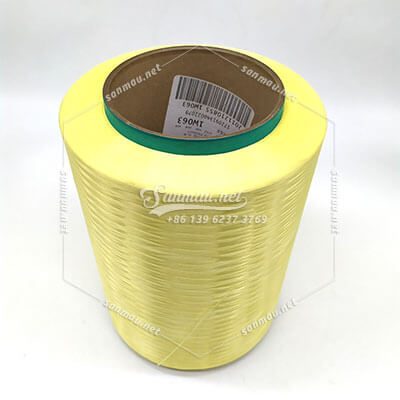
Kevlar Fiber 400Denier by DuPont
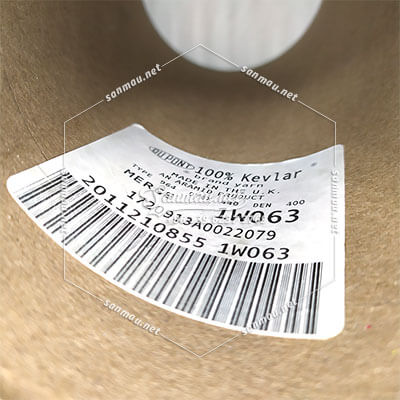
The Tag of Kevlar Fiber 400D by DuPont
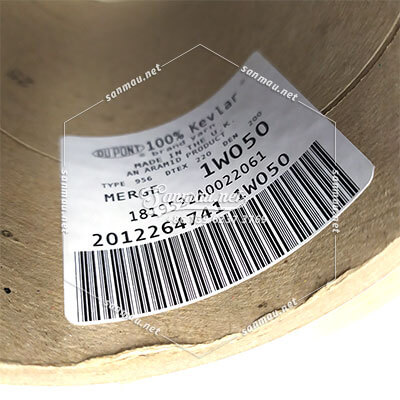
The Tag of Kevlar Fiber 200D by DuPont
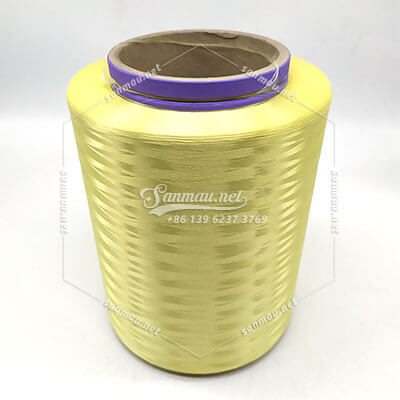
Kevlar Fiber 200Denier by DuPont
Comparision of Materials
For complicated working conditions, ordinary materials are more and more replaced by aramid, UHMWPE, PBO fibers. With these advanced fibers, we managed to develop a series of textile which includes sewing thread, string, rope, straps, webbing, and fabric. Here’s the table of specifications of various materials:
| Material | Density (g/cm³) |
Tensile strength (GPa) |
Specific strength | Elastic modulus (GPa) |
Specific modulus |
|---|---|---|---|---|---|
| Steel re-bar | 7.85 | 0.5 | 0.0667 | 210 | 26.7 |
| A-glass | 2.46 | 2.1 | 1.35 | 69 | 28.0 |
| C-glass | 2.46 | 2.5 | 1.35 | 69 | 28.0 |
| E-glass | 2.60 | 2.5 | 1.33 | 76 | 29.2 |
| S-2 glass | 2.49 | 4.83 | 1.94 | 97 | 39.0 |
| Silicon | 2.16 | 0.206–0.412 | 0.0954–0.191 | ||
| Quartz | 2.2 | 0.3438 | 0.156 | ||
| Carbon fiber (large) | 1.74 | 3.62 | 2.08 | 228 | 131 |
| Carbon fiber (medium) | 1.80 | 5.10 | 2.83 | 241 | 134 |
| Carbon fiber (small) | 1.80 | 6.21 | 3.45 | 297 | 165 |
| Kevlar K-29 | 1.44 | 3.62 | 2.51 | 41.4 | 28.8 |
| Kevlar K-149 | 1.47 | 3.48 | 2.37 | ||
| Polypropylene | 0.91 | 0.27-0.65 | 0.297–0.714 | 38 | 41.7 |
| Polyacrylonitrile | 1.18 | 0.50-0.91 | 0.424–0.771 | 75 | 63.6 |
| Basalt fiber | 2.65 | 2.9–3.1 | 1.57–1.81 | 85–87 | 32–33 |
Terms of Cooperation
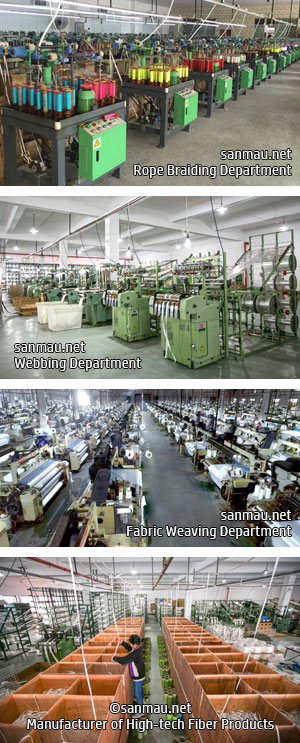
For more details, PLEASE DO NOT HESITATE to write me an e-mail, or just dial the number directly.
|
|||||||||||||||

